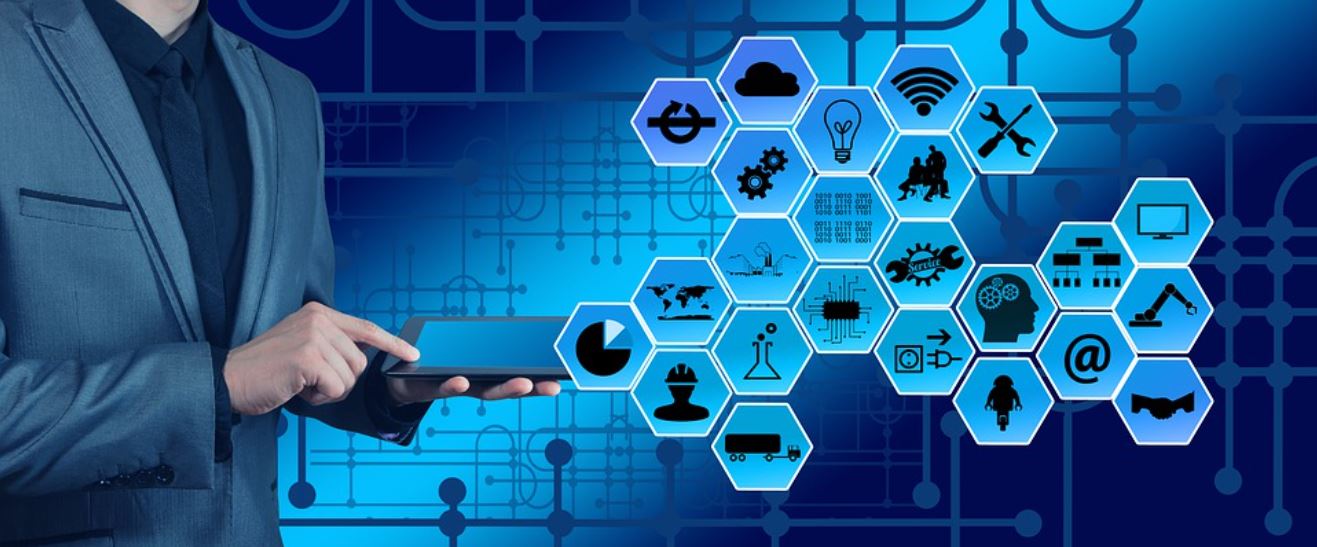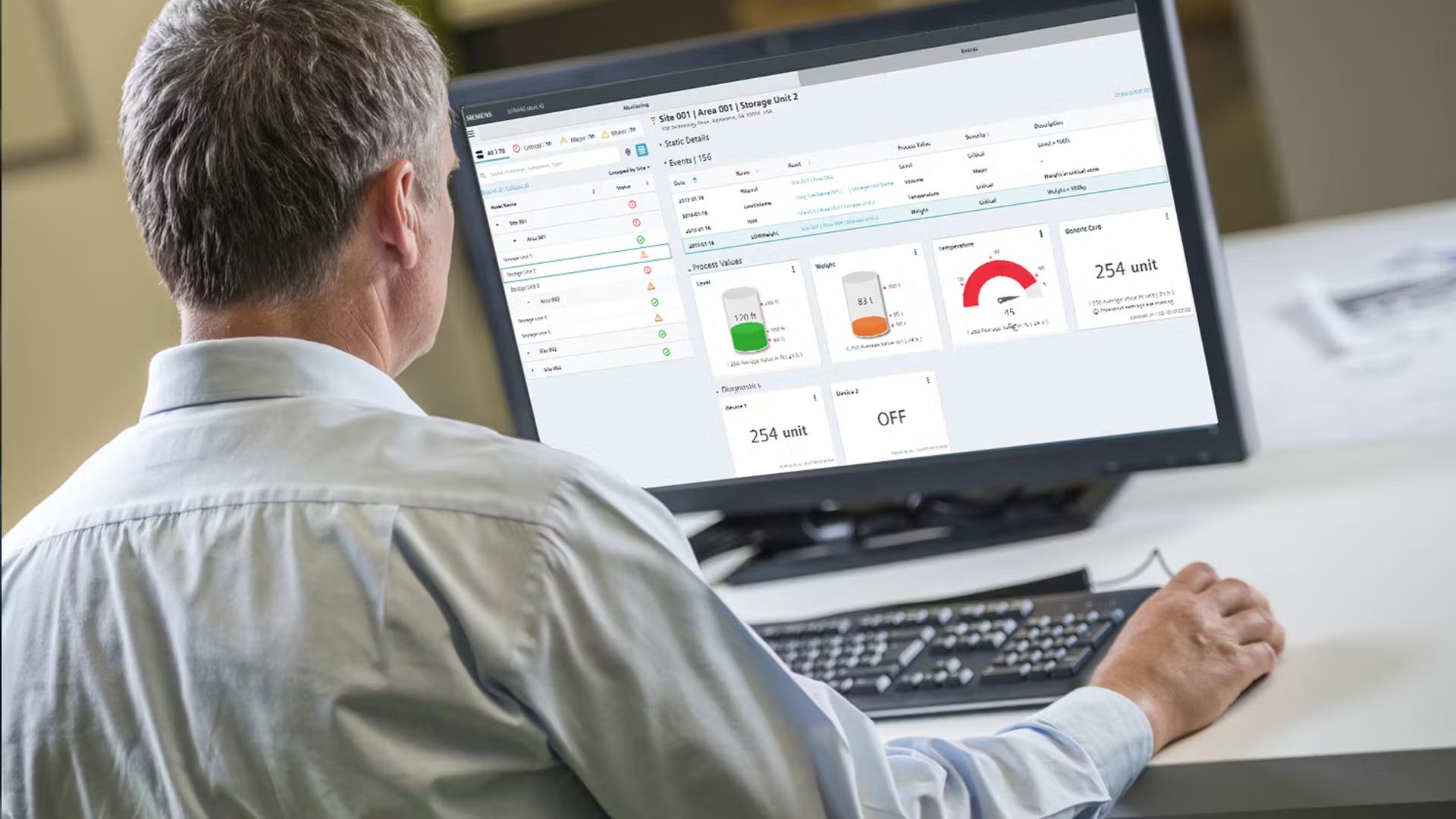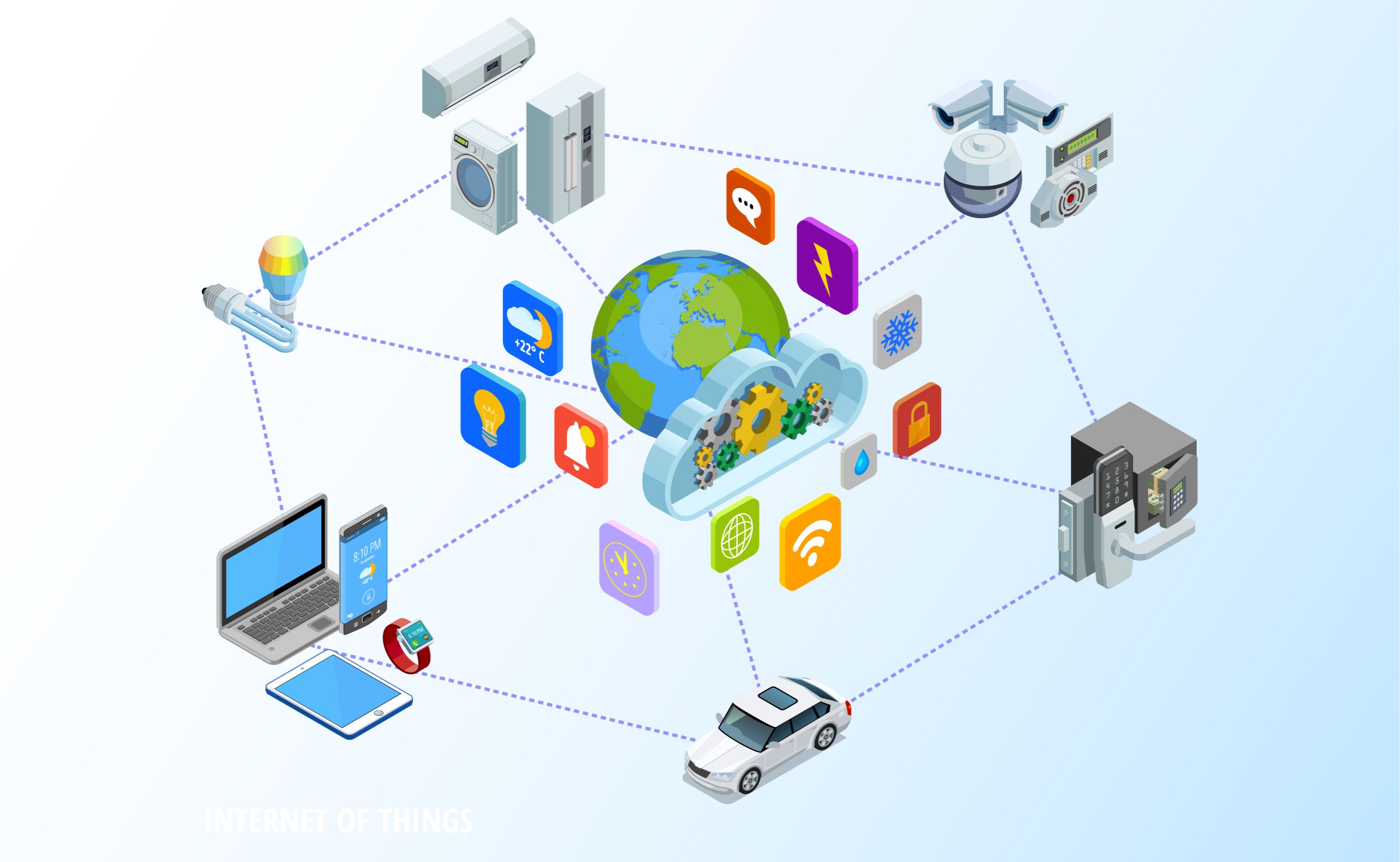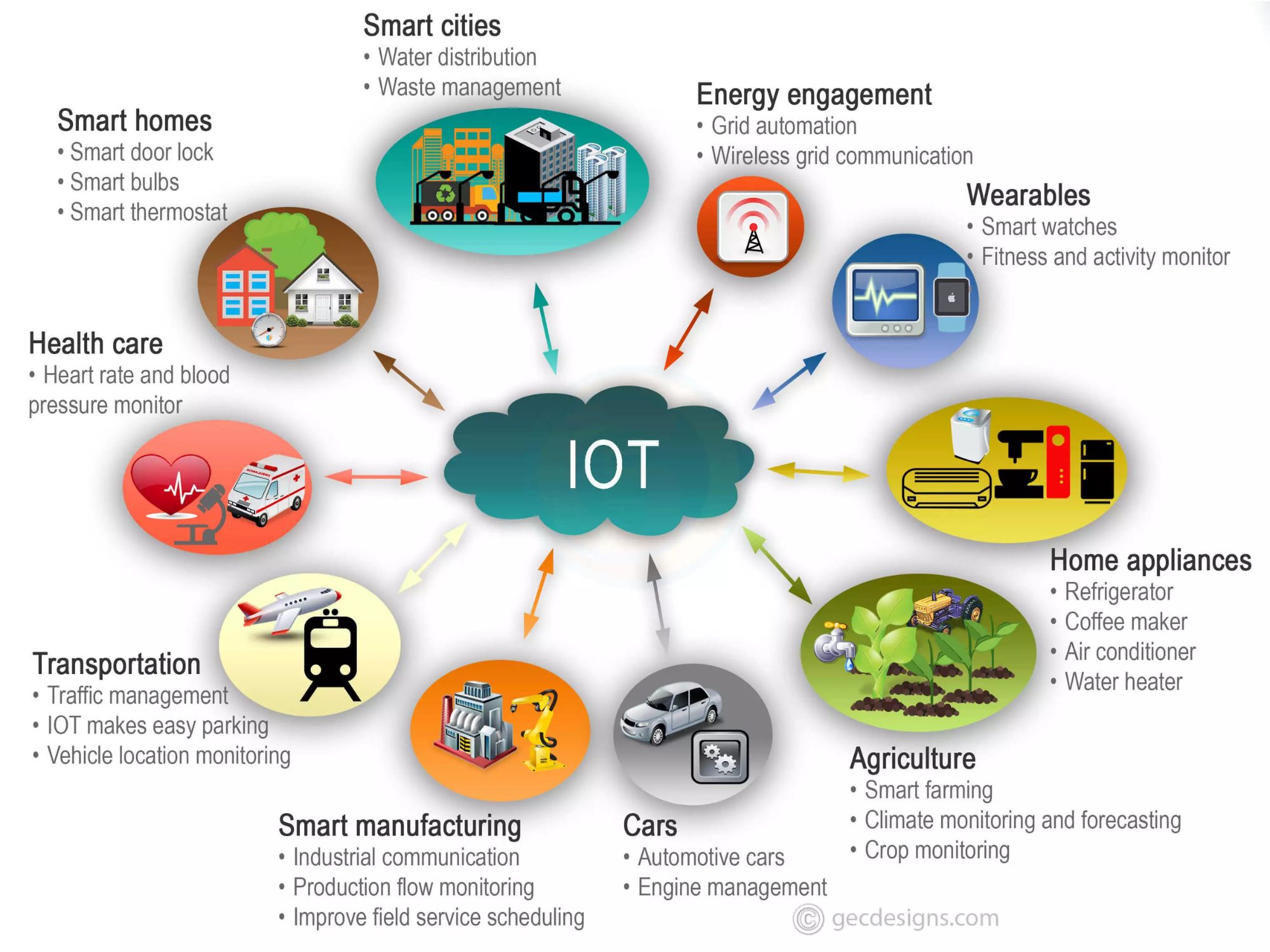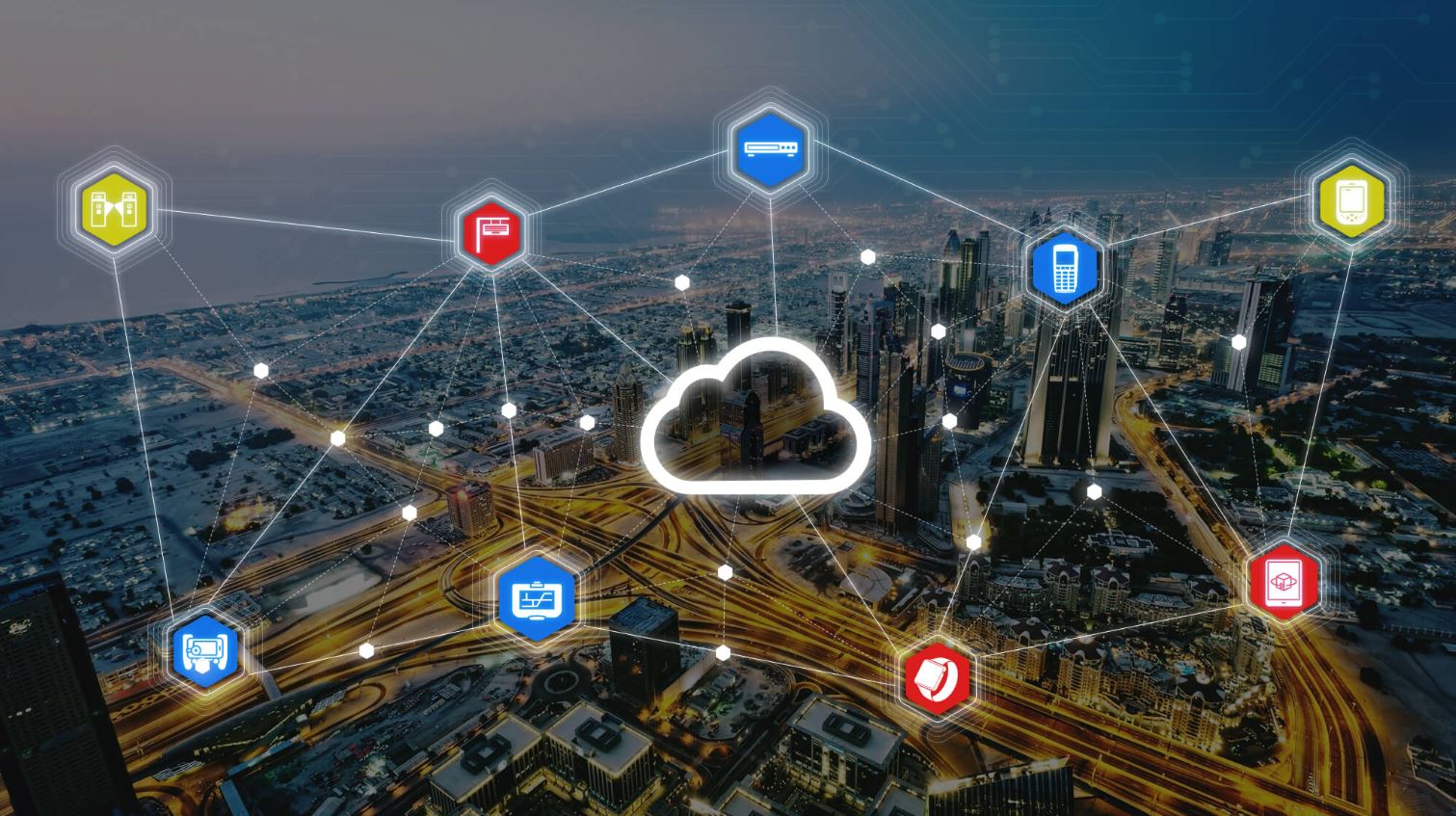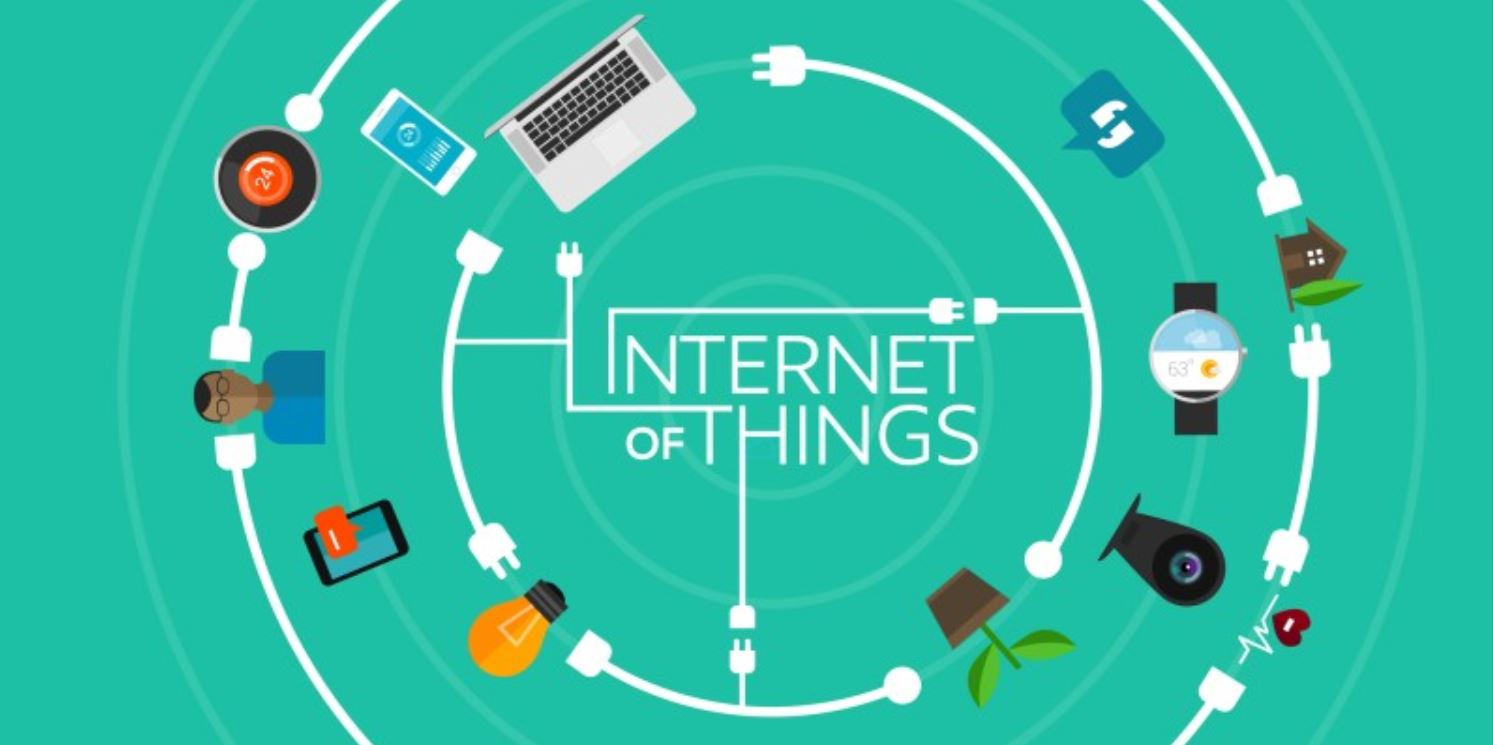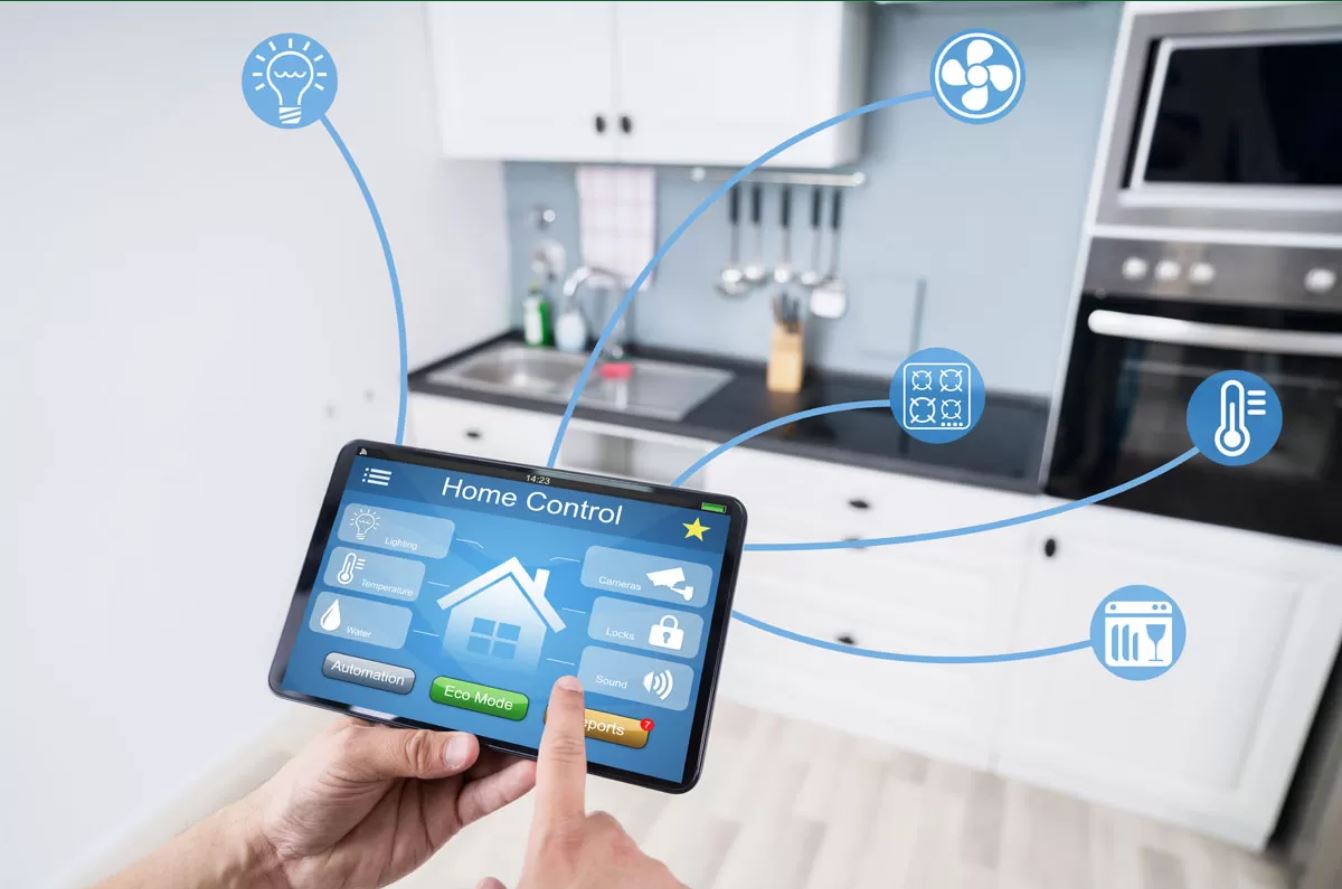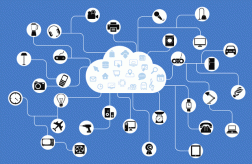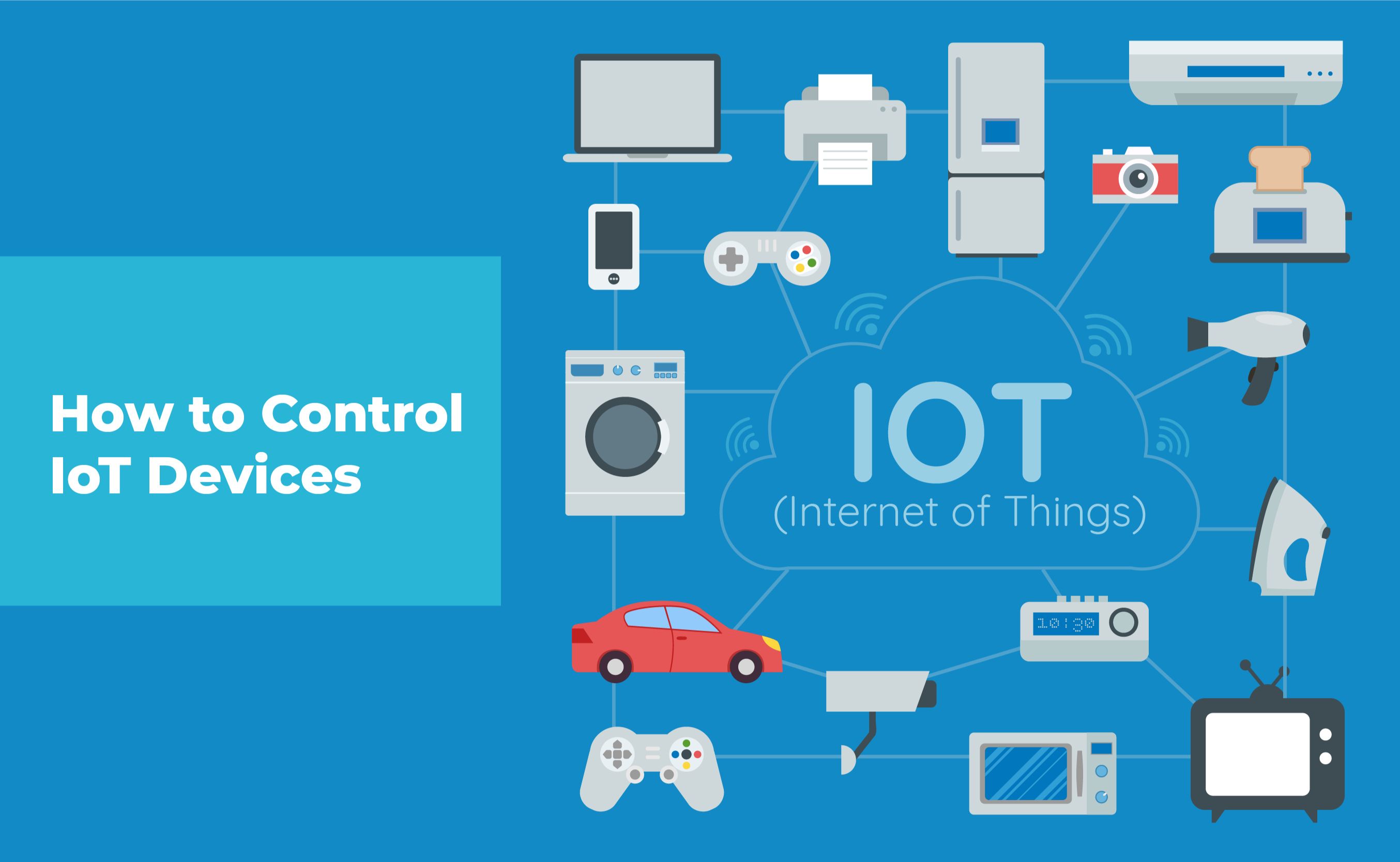Introduction
Remote IoT, or Remote Internet of Things, is a technology that has revolutionized the way we interact with and control interconnected devices. It allows us to remotely monitor, manage, and control various devices and systems through the use of internet connectivity. The proliferation of smart devices and the ever-growing need for seamless automation has made remote IoT an integral part of many industries.
Whether it’s controlling our home appliances, monitoring industrial systems, or optimizing logistics and transportation, remote IoT has become a game-changer in enhancing efficiency, productivity, and convenience. By leveraging the power of the internet, businesses and individuals can access real-time data and insights, make informed decisions, and automate processes with ease.
This article discusses the diverse applications and use cases of remote IoT across various industries. From home automation to healthcare, transportation to retail, remote IoT is playing a crucial role in transforming the way we live and work. Let’s explore how this technology is being implemented for the benefit of individuals and organizations alike.
Home Automation
Home automation is one of the most popular applications of remote IoT. It allows homeowners to control and monitor various aspects of their homes remotely, enhancing convenience, security, and energy efficiency. Through connected devices and smart home hubs, individuals can control thermostats, lighting, security systems, and even appliances with just a few taps on their smartphones.
With remote IoT, homeowners can create customized schedules for their devices, ensuring that lights are turned on/off at specific times or that the temperature is adjusted before they arrive home. This level of control not only adds convenience but also helps to reduce energy consumption and boost cost savings.
Furthermore, remote IoT enables homeowners to monitor their homes remotely through surveillance cameras and sensor-based systems. In case of any suspicious activity or emergencies, instant notifications can be sent to the homeowner’s smartphone, allowing them to take immediate action or notify authorities.
Integration with voice assistants, such as Amazon Alexa or Google Assistant, further enhances the home automation experience. Homeowners can simply use voice commands to control their smart devices, making it even more convenient and hands-free.
Whether it’s adjusting the temperature while lying on the couch or ensuring that the lights are turned off when leaving the house, remote IoT simplifies and streamlines the management of our homes. It offers improved comfort, security, and energy efficiency, making our lives more convenient and sustainable.
Smart Grids
Smart grids are revolutionizing the way electricity is produced, distributed, and consumed, and remote IoT plays a crucial role in optimizing and managing these complex systems. By integrating advanced sensors, monitoring devices, and communication technologies, smart grids transform traditional power grids into intelligent networks.
Remote IoT enables real-time monitoring and control of electricity generation, transmission, and distribution. It allows utility companies to gather accurate data on energy consumption patterns and make informed decisions regarding load balancing, power routing, and demand response. This optimized management of the grid leads to improved efficiency, reduced outages, and increased reliability.
With remote IoT, consumers also have more control over their electricity usage. They can monitor their energy consumption in real-time, receive detailed insights on their usage patterns, and make adjustments to reduce their carbon footprint and energy bills. Smart meters, enabled by remote IoT, provide accurate and automated meter reading, eliminating the need for manual visits and enhancing billing accuracy.
Furthermore, remote IoT facilitates the integration of renewable energy sources into the grid. Solar panels, wind turbines, and other clean energy sources can be monitored and controlled remotely, ensuring optimal utilization and integration with the grid. This enables a more sustainable and environmentally-friendly energy infrastructure.
Smart grids also enhance power grid security through remote IoT. Real-time monitoring of equipment, early detection of faults or anomalies, and prompt response to potential threats help to mitigate risks and ensure grid stability.
In summary, the implementation of remote IoT in smart grids is transforming the energy sector. It enables efficient energy management, empowers consumers to make informed choices, increases renewable energy integration, and enhances overall grid reliability and security.
Industrial Monitoring and Control
Industrial monitoring and control is another significant application of remote IoT, revolutionizing the way industries operate and optimize their processes. By connecting various machines, equipment, and sensors, remote IoT enables real-time monitoring, data collection, and control of industrial systems.
Through remote IoT, industrial operators can monitor critical parameters such as temperature, pressure, humidity, and performance metrics of machines and equipment. This real-time monitoring facilitates predictive maintenance, enabling proactive identification of potential issues and reducing downtime. By collecting and analyzing data from multiple sources, remote IoT helps optimize equipment performance, improve productivity, and decrease maintenance costs.
Remote IoT also improves safety in industrial environments. With sensors and cameras connected to the IoT network, operators can monitor potentially hazardous areas and ensure compliance with safety protocols. In case of any abnormalities or emergencies, instant notifications can be sent, allowing for prompt response and mitigating risks.
Additionally, remote IoT enables remote control and automation of industrial processes. Through a centralized IoT platform, operators can control machines, adjust parameters, and optimize workflows from a remote location. This reduces the need for manual intervention, increases operational efficiency, and enhances overall process control.
Furthermore, remote IoT enables seamless integration with supply chain management systems. With real-time monitoring and data sharing, inventory levels, product quality, and logistics can be optimized, ensuring timely delivery and reducing wastage.
In summary, remote IoT in industrial monitoring and control empowers businesses to optimize processes, enhance equipment performance, improve safety, and streamline supply chain management. It provides real-time insights, enables remote control, and facilitates proactive maintenance, resulting in increased productivity and cost savings.
Environmental Monitoring
Environmental monitoring is a critical application of remote IoT that enables the collection of real-time data about the environment, natural resources, and weather conditions. By collecting and analyzing this data, remote IoT facilitates better understanding and management of our environment and supports efforts towards sustainability and conservation.
Remote IoT allows for the deployment of sensors and monitoring devices in various ecosystems, including forests, oceans, and urban areas. These sensors can measure parameters such as air quality, soil moisture, water quality, noise levels, and wildlife activity. The collected data is transmitted and stored in the cloud, enabling scientists, researchers, and policymakers to access and analyze it remotely.
This real-time data provides valuable insights into environmental trends, helps monitor pollution levels, and supports early detection of natural disasters such as floods or wildfires. Remote IoT enables timely and informed decision-making regarding resource allocation, emergency response, and conservation efforts.
Moreover, remote IoT plays a crucial role in monitoring and protecting endangered species and habitats. Through the use of GPS trackers, environmentalists can track the movements and behaviors of animals, gather data on their habitats, and develop conservation strategies accordingly.
Remote IoT also enables the implementation of smart agriculture practices. Sensors deployed in farmlands can monitor soil moisture levels, temperature, and nutrient content, providing farmers with real-time data to optimize irrigation, fertilizer application, and overall crop health. This precision agriculture approach reduces resource wastage, enhances crop yields, and supports sustainable farming practices.
In summary, the application of remote IoT in environmental monitoring empowers us to better understand and protect our environment. It facilitates real-time data collection, early detection of environmental risks, conservation efforts, and sustainable resource management.
Agriculture and Farming
Agriculture and farming have greatly benefited from the implementation of remote IoT technology. With the help of connected devices and sensors, farmers can optimize their farming practices, increase productivity, and reduce resource wastage.
Remote IoT enables real-time monitoring of important agricultural factors such as soil conditions, humidity levels, temperature, and crop growth. By deploying sensors and instruments throughout the fields, farmers can gather accurate and timely data about the health of their crops and make data-driven decisions about irrigation, fertilization, and pest control.
This data-driven approach, known as precision agriculture, allows farmers to apply inputs only where and when needed, reducing costs and minimizing environmental impact. With remote IoT, farmers can remotely monitor and control irrigation systems, adjusting water supply based on real-time weather forecasts and crop needs.
Furthermore, remote IoT enables the use of autonomous farming machinery and drones. These devices can be equipped with sensors and cameras to monitor crop health, detect diseases, and even perform targeted application of fertilizers or pesticides. This not only saves time and labor but also ensures efficient and accurate resource utilization.
Remote IoT also helps farmers monitor and track livestock. With GPS-enabled tags and sensors, farmers can gather data on animal health, behavior, and location. This helps in identifying potential issues, ensuring proper herd management, and maximizing animal welfare.
Additionally, remote IoT facilitates the integration of smart farming systems with market demand and supply chain management. Real-time data on crop yield, quality, and availability can be shared with distributors and retailers, enabling better logistics planning and minimizing food waste.
In summary, remote IoT technology has transformed agriculture and farming by providing farmers with real-time data and insights. It enables precision agriculture, reduces resource wastage, improves livestock management, and supports efficient supply chain management in the agricultural sector.
Healthcare
The healthcare industry has experienced significant advancements with the integration of remote IoT technology. By connecting medical devices, wearables, and healthcare systems, remote IoT enables real-time monitoring, improved patient care, and enhanced efficiency in healthcare settings.
Remote IoT plays a crucial role in remote patient monitoring, allowing healthcare providers to collect and analyze patient data from a distance. Patients can wear connected devices that monitor vital signs, such as heart rate, blood pressure, and oxygen levels. This data is transmitted to healthcare professionals in real-time, enabling early detection of medical complications and timely intervention.
With remote IoT, healthcare providers can remotely monitor patients with chronic conditions, enabling them to assess medication adherence, track symptoms, and adjust treatment plans as needed. This not only improves patient outcomes but also reduces the need for frequent hospital visits, minimizing healthcare costs.
Remote IoT also facilitates telemedicine services, enabling remote consultations between patients and healthcare providers. Through video conferencing and connected medical devices, doctors can diagnose and treat patients remotely, ensuring timely care, especially for those in remote or underserved areas.
In hospitals, remote IoT improves the management of medical equipment and the overall patient experience. Connected devices can monitor the status of equipment, such as MRI machines, ensuring timely maintenance and reducing equipment downtime. Additionally, IoT-enabled systems allow for automated patient monitoring, ensuring efficient and timely delivery of medications, and reducing errors.
Furthermore, remote IoT enables the tracking and monitoring of medications and supplies within healthcare facilities. Smart inventory systems connected to IoT networks can automatically monitor stock levels, track expiration dates, and streamline the procurement process, ensuring the availability of essential supplies.
Remote IoT also enhances healthcare facilities’ response to emergencies and disaster situations. Real-time monitoring of patient data and resource allocation helps healthcare professionals make informed decisions and provide prompt care during critical situations.
In summary, remote IoT technology is transforming the healthcare industry by enabling remote patient monitoring, telemedicine services, efficient equipment management, and streamlined operations. It enhances patient care, improves efficiency, and facilitates access to healthcare services, ultimately improving healthcare outcomes.
Transportation and Logistics
Transportation and logistics are industries that heavily rely on the efficient management and tracking of goods and vehicles. Remote IoT technology has revolutionized these industries by providing real-time visibility, optimizing routes, and enhancing overall efficiency.
With the integration of remote IoT, vehicles can be equipped with GPS tracking devices and sensors, allowing for real-time monitoring of their location, speed, and condition. This enables logistics companies to track shipments, monitor delivery times, and ensure the safety and security of goods during transport.
Remote IoT also facilitates the optimization of transportation routes. By analyzing real-time traffic data, weather conditions, and other variables, logistics companies can identify the most efficient routes and make real-time adjustments, reducing delivery times and minimizing fuel consumption.
Furthermore, remote IoT enables the implementation of smart fleet management systems. By collecting data on vehicle performance, fuel consumption, and maintenance needs, companies can optimize maintenance schedules, prevent breakdowns, and extend the lifespan of their fleet. This not only reduces costs but also ensures reliable and timely deliveries.
Remote IoT also plays a crucial role in supply chain management. Through the use of connected sensors and systems, companies can monitor inventory levels, track the condition of perishable goods, and automate reorder processes. This leads to more accurate demand forecasting, reduced stockouts, and improved inventory control.
Moreover, remote IoT enhances the security and safety of transportation and logistics operations. Connected cameras, sensors, and alarm systems can be utilized to monitor warehouses, truck fleets, and shipments. In case of any suspicious activities, instant notifications can be sent to relevant parties, allowing for immediate action.
Additionally, remote IoT improves the overall customer experience in transportation and logistics. Through real-time tracking updates and notifications, customers can stay informed about the status and location of their shipments. This transparency builds trust and ensures timely and predictable deliveries.
In summary, remote IoT technology is transforming transportation and logistics by providing real-time visibility, optimizing routes, and enhancing overall efficiency. It improves fleet management, supply chain operations, security, and the customer experience in these industries.
Retail and Inventory Management
Retail and inventory management have been significantly improved with the integration of remote IoT technology. By connecting physical stores, warehouses, and inventory systems, remote IoT enables real-time tracking, optimized inventory management, and enhanced customer experience.
With remote IoT, retailers can monitor and track their inventory levels in real-time. Connected sensors and devices can provide accurate and up-to-date information on stock levels, ensuring that shelves are always well-stocked and reducing the risk of out-of-stock situations. This leads to improved customer satisfaction and increased sales.
Furthermore, remote IoT enables retailers to implement smart shelves and RFID technology. IoT-enabled shelves can detect when products are running low and automatically trigger reorder processes. RFID tags on products allow retailers to track individual items, monitor their movement within the store, and analyze purchase patterns for better inventory management.
Remote IoT also helps retailers optimize their supply chain operations. By collecting data on demand patterns, sales trends, and customer behavior, retailers can make more accurate demand forecasts, streamline procurement processes, and reduce unnecessary inventory holding costs.
In addition, remote IoT improves the efficiency of order fulfillment and delivery processes. Connected systems can automate order processing, routing, and tracking, ensuring timely and accurate deliveries. This enhances the overall customer experience, leading to increased customer satisfaction and loyalty.
Moreover, remote IoT offers personalized shopping experiences through beacon technology. By deploying beacons in-store, retailers can send personalized offers, recommendations, and notifications to customers’ smartphones based on their location and purchase history. This targeted marketing approach not only improves the customer experience but also increases sales conversion rates.
Remote IoT also plays a significant role in ensuring the authenticity and integrity of products. Connected devices and blockchain technology enable retailers to track and verify the origin and authenticity of products, reducing the risk of counterfeit goods and enhancing consumer trust.
In summary, remote IoT technology has revolutionized retail and inventory management by providing real-time tracking, inventory optimization, personalized shopping experiences, and enhanced supply chain operations. It improves inventory management, reduces costs, enhances the customer experience, and ensures the authenticity of products.
Security and Surveillance
Security and surveillance systems have greatly benefited from the integration of remote IoT technology. By connecting cameras, sensors, and access control systems, remote IoT enables enhanced monitoring, real-time alerts, and improved security measures.
Remote IoT allows for the deployment of connected cameras and sensors in various settings, such as homes, businesses, and public spaces. These devices can capture and transmit real-time video footage and data, enabling remote monitoring of premises and activities.
Through remote IoT, security personnel can receive real-time alerts and notifications in case of suspicious activities or breaches. Intrusion sensors, motion detectors, and facial recognition technology coupled with AI algorithms can detect anomalies and trigger immediate responses.
Remote IoT also enables the integration of access control systems. With connected access control devices, access permissions can be remotely managed, granting or revoking access to authorized individuals and enabling a seamless visitor management process.
Furthermore, remote IoT enhances video analytics capabilities for improved surveillance. AI-powered algorithms can analyze video footage in real-time, detecting and flagging potential threats or abnormal behaviors. This proactive approach helps prevent security incidents and allows for timely intervention.
In addition, remote IoT facilitates remote monitoring of critical infrastructure, such as power plants and transportation networks. With the help of sensors and surveillance systems, operators can remotely monitor equipment status, identify potential risks, and respond promptly to any emergencies.
Moreover, remote IoT strengthens cybersecurity measures. By leveraging IoT security solutions, vulnerabilities in connected devices and systems can be identified and addressed, reducing the risk of cyber-attacks and unauthorized access.
In summary, remote IoT technology has revolutionized security and surveillance by providing enhanced monitoring, real-time alerts, and improved security measures. It enables seamless integration of cameras, sensors, and access control systems for comprehensive surveillance and ensures timely response to potential security threats.
Conclusion
Remote IoT, or Remote Internet of Things, has emerged as a transformative technology across various industries. From home automation and smart grids to healthcare and transportation, remote IoT has revolutionized the way we interact with, monitor, and control interconnected devices and systems.
Through the power of internet connectivity, remote IoT enables real-time data collection, analysis, and remote control of devices. This technology has opened up new opportunities for efficiency, convenience, and sustainability across numerous sectors.
In home automation, remote IoT allows homeowners to control and monitor their homes remotely, improving convenience, energy efficiency, and security. Smart grids leverage remote IoT to optimize energy generation, transmission, and distribution, leading to improved efficiency and integration of renewable energy sources.
Industries such as healthcare, agriculture, and transportation have also significantly benefitted from remote IoT. With real-time monitoring and remote control, healthcare professionals can provide better patient care, while farmers optimize their farming practices and logistics providers streamline their operations.
Environmental monitoring leverages remote IoT to collect real-time data on air quality, water quality, and wildlife activity, aiding in conservation efforts. Additionally, remote IoT has improved inventory management in retail, supply chain operations, and enhanced security and surveillance systems.
Overall, the widespread adoption of remote IoT is transforming industries, enhancing efficiency, reducing costs, and improving the overall customer experience. It empowers businesses to make data-driven decisions, automate processes, and optimize resource utilization, paving the way for a more sustainable and connected future.
As remote IoT technology continues to advance, we can expect further innovation and integration across industries. The possibilities are limitless, and its impact on our daily lives is becoming increasingly profound.







